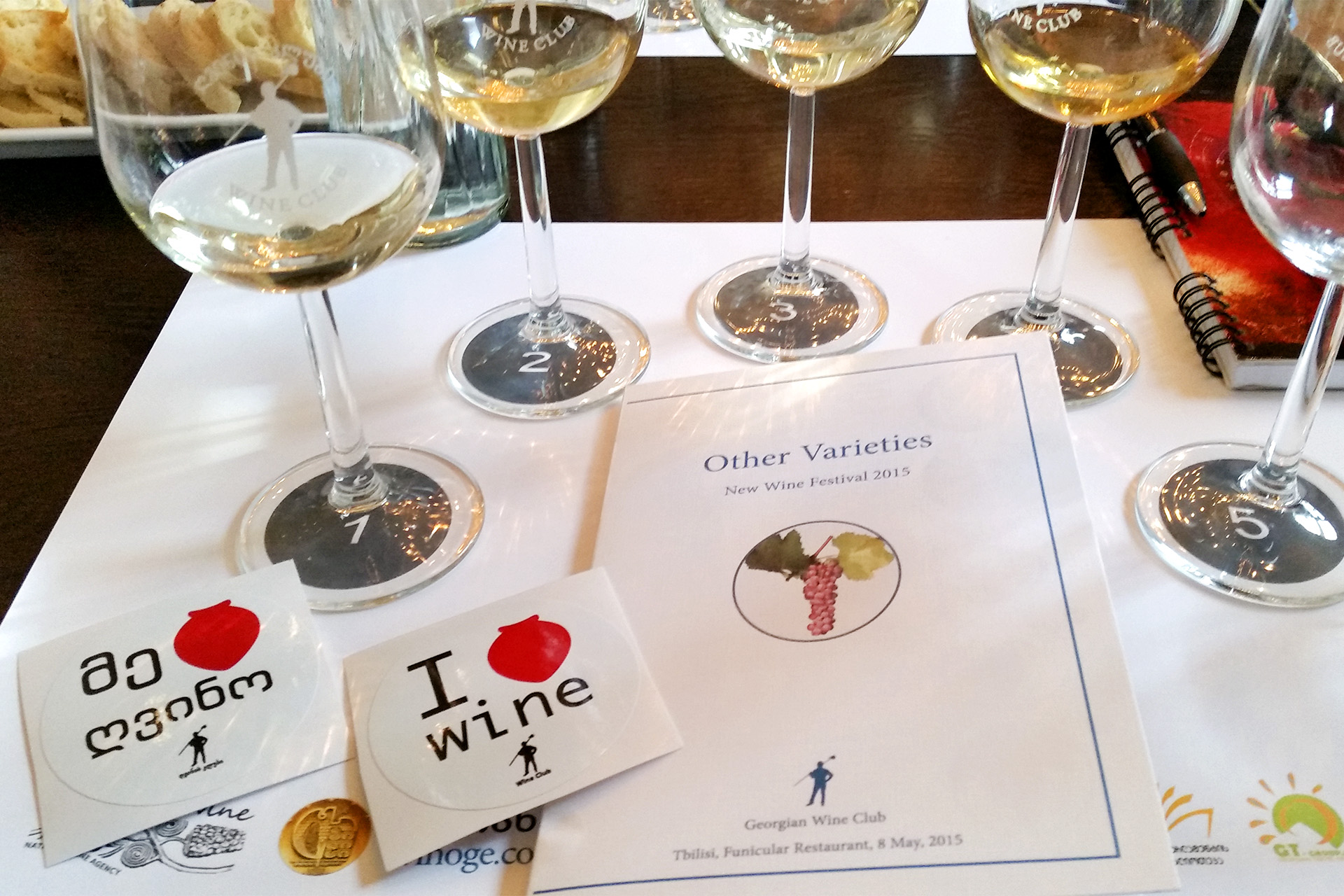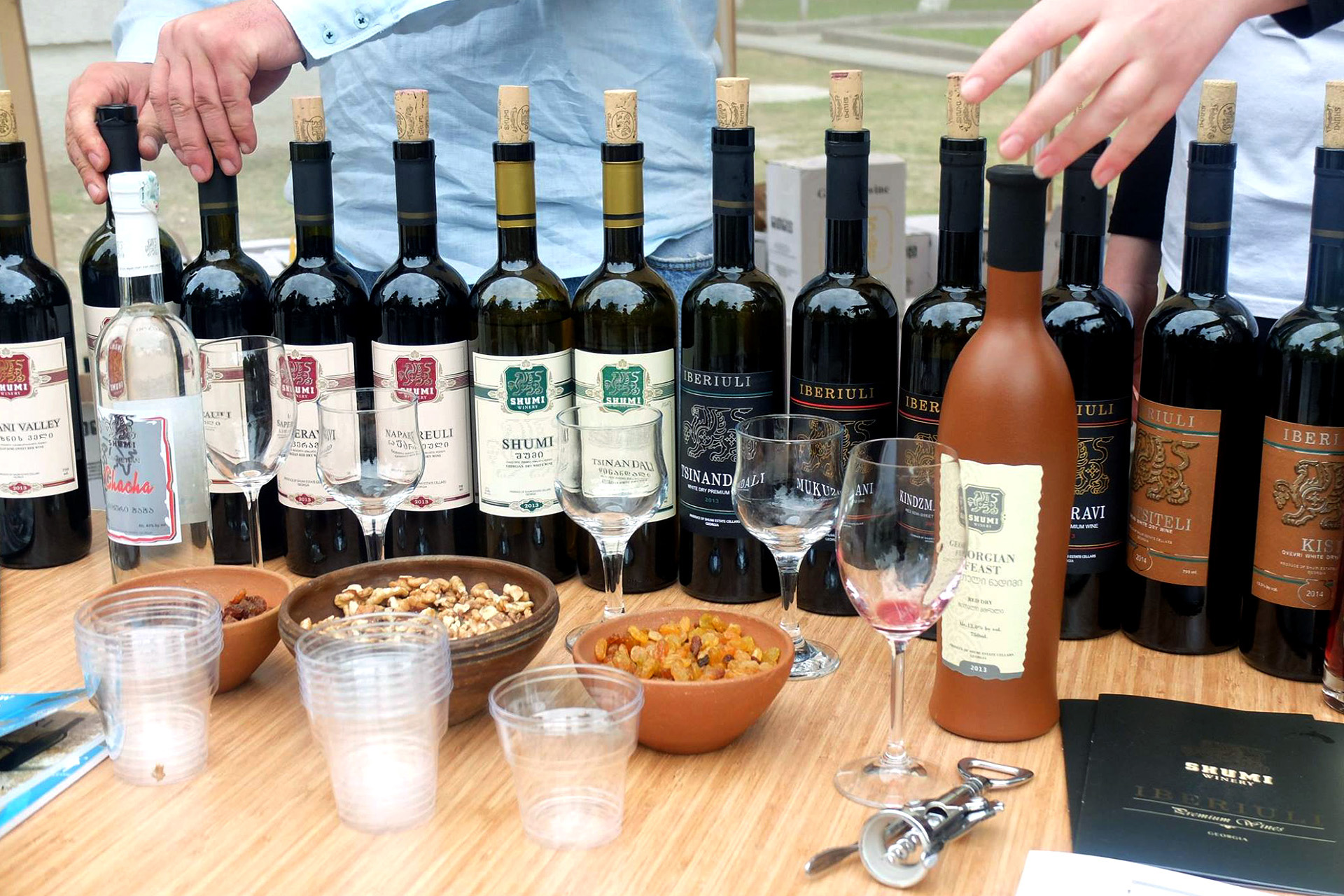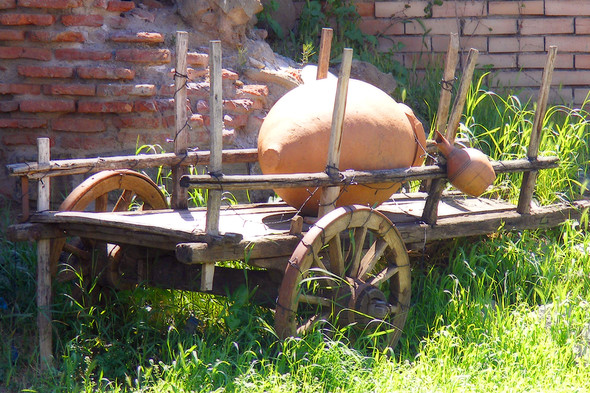“The culture of man and mankind has achieved progress in all areas and in all respects on the whole, but only where it serves the spiritual perfection of the individual.” – Albert Schweitzer
Tbilisi, just like the inhabitants of the country, is linked to the vine roots. Wine determines their history, their culture and their identity. Just glancing up at statue of Kartvlis Deda jutting out at the top of the Sololaki hill, who offers his friends wine and his enemies his sword, is enough. As I was wandering around the streets, I felt a little like I was in Rome. There was a church on every other corner, although a little different, as they belong to different religions. In the churches, you can still find evidence of wine-related ornamentation.
The city’s skyline is very much determined by the Peace Bridge and the newly built exhibition/concert hall complex. These two, as well as other modern buildings, do credit to the craftsmanship of Michele De Lucchi and Massimiliano Fuksas. Taking the cable car from the river bank, it is easy to reach the Narikala Fortress, which juts out on the other side, from which you can walk down to the sulphur baths or freshen up in the spray from the waterfall. There was a familiar emotion, which to tell the truth, nobody can feel in the same way as someone who has somehow lived through it – the Soviet Union’s footprint. The whole country is typical of a kind of duality, the contrasts on the capital’s streets, the socialist realist or rundown buildings opposite modern or historical constructions. The cranes towering over the city everywhere confirm that reconstruction is in process and will change all of this – I wish them every success. So, there is really no lack of things to see or taste, everyone can find something suitable to fill their time.

From my point of view, the new wine festival was the best choice (this year's theme was “Other Varieties”), which as time went by, exuded an increasingly merry atmosphere. There was not a spittoon in sight, and even though it was my own fault that I had left mine at the hotel, I didn’t mind. More than thirty exhibitors were taking part in the event, representing the entire regional palette of Georgia. The winemakers were friendly, but not many of them could speak another language. The event was permeated by the smell of roasting meat and if the festival band took a break, a polyphonic choir rang out from the guests, burning off the wine fumes. There were a surprising number of children for a wine revelry. A family programme where the kids were fighting with balloons while the parents’ skill was that of quenching their thirst. Another contradiction existed here, when the food trucks appeared, adapted from push chairs piled up with cardboard box, and accompanied by the beggars.
As time passed, the park benches filled up, people were resting among the raised glasses. The carousing swelled into a drifting deluge of smiles that surged along between the pavilions. After twenty different wines, I felt like lying down on the grass and, as usual at such times, day-dreaming about the beauty of life, as the clouds vanished. And, as I was no longer thirsty anyway, I could have a farewell ‘Chacha’ tasting, that is the local marc brandy.
I must admit, when I first read the we have been continuously producing wine for eight thousand years motto, I thought it was nothing more than a catchy advertising slogan, thus generating a new market for its products. However, there is no other country in the world with such study of universal wine culture and viticultural traditions, where the roots reach so deeply into history’s soil. The first written record of wine (Epic of Gilgamesh) categorically tells us we have to seek the South Caucasus fertile valley and the fermented juice of the ruby red bunches hanging from the tree of life in today’s Georgia, and the surrounding countries. However, opinions are divided as to whether we owe the word ‘wine’ to them (ghvino).
When I was pursuing my WSET studies, it was beaten into my head that there are more than four thousand registered grape varieties in the world. Then came the next thing for me to wonder at, that in Georgia there are more than five hundred native varieties, although only about forty are cultivated. I also had some idea about the kvevri before I arrived. The pressed grape juice is dug into the ground in clay jars (vevri, pithos in Greek, dolium in Latin) sealed with beeswax, where constant, low-temperature fermentation will take place. Similar to wood, the kvevri ensure micro-oxidation, although this does not influence the richness of the flavours. The wine is usually drawn off after several months of skin contact. This ancient method (Méthode Kartuli), which is UNESCO listed, has merely become more sophisticated over time. Later, this method was mastered by the Thracians, Egyptians, Greeks and finally the Romans, who spread it throughout Europe until they learnt about barrel use from the Gauls.

The first tasting surprised me by many things, because as well as the colour pigments in the skin, phenols and tannins also find their way into wines made in this way. Not only the appearance is different in such wines, but also the aromas and the texture, the style differs entirely from what we are accustomed to, mostly due to the months-long maceration. Thanks to the antioxidant effect of the polyphenols, the life of the wine increases and you only need to add a little sulphur, or none at all. The most well-known varieties are Rkatsiteli and Saperavi, although there are a fair few more which are worth getting to know better: Alazani, Aleksandrouli, Badagoni, Barakoni, Khvanchkara, Kindzmarauli, Mtsvane, Mujuretuli, Mukuzani, Tsinandali, Tsolikouri, Usakhelauri. The Soviets sacrificed this traditional method on the altar of mass production, all too familiar to us Hungarians too, but they have managed to resurrect traditional winemaking once again.
I was fortunate enough to be invited to Kiketi, to the Gotsa family winery, which was a truly defining experience for me. I was not so surprised that he had not been born into a winemaking family and that he had come from the construction industry, well the way of thinking gained from this can indeed be transposed into winemaking, as the water-cooled kvevri mix innovation and tradition. Beka not only showed me his winery, but also invited me for dinner, where I tasted their hospitality and the importance of family. The table groaned with delicious food, Georgian cuisine is really wonderful. After the meal, I had an impromptu Seperavi vertical tasting, while the female members of the family partied the night away with synthesiser and microphone. If anyone else is on the receiving end of such a grand tasting, I recommend the Borjom water, which is fantastic for hangovers.
The next day took me to a wine bar, where I got talking to a Georgian family. They asked why I had come to Georgia and why I was there. After I explained, they only had one question: do you have a glass? We passed a pleasant afternoon, we drank and ate, and furling up the thread of history, we reached the roots of the Georgian people. I tried to explain from the point of view of a foreigner how I saw them and their culture. I compared them to the Italians because of their family values and communal meals, but they did not really understand this.
Based on what they shared with me, the order is as follows: peace in the family, peace in the country and respect for guests. Nobody mixed up Budapest with Bucharest, someone even talked about the times before Trianon, interspersed with the fact that we, just like they, also know what it is like to be free again. This established the bond in me which joins them to us.
People are friendly and helpful, the food and wines are delicious, Georgia is an unmissable experience for all wine-loving adventurers.






